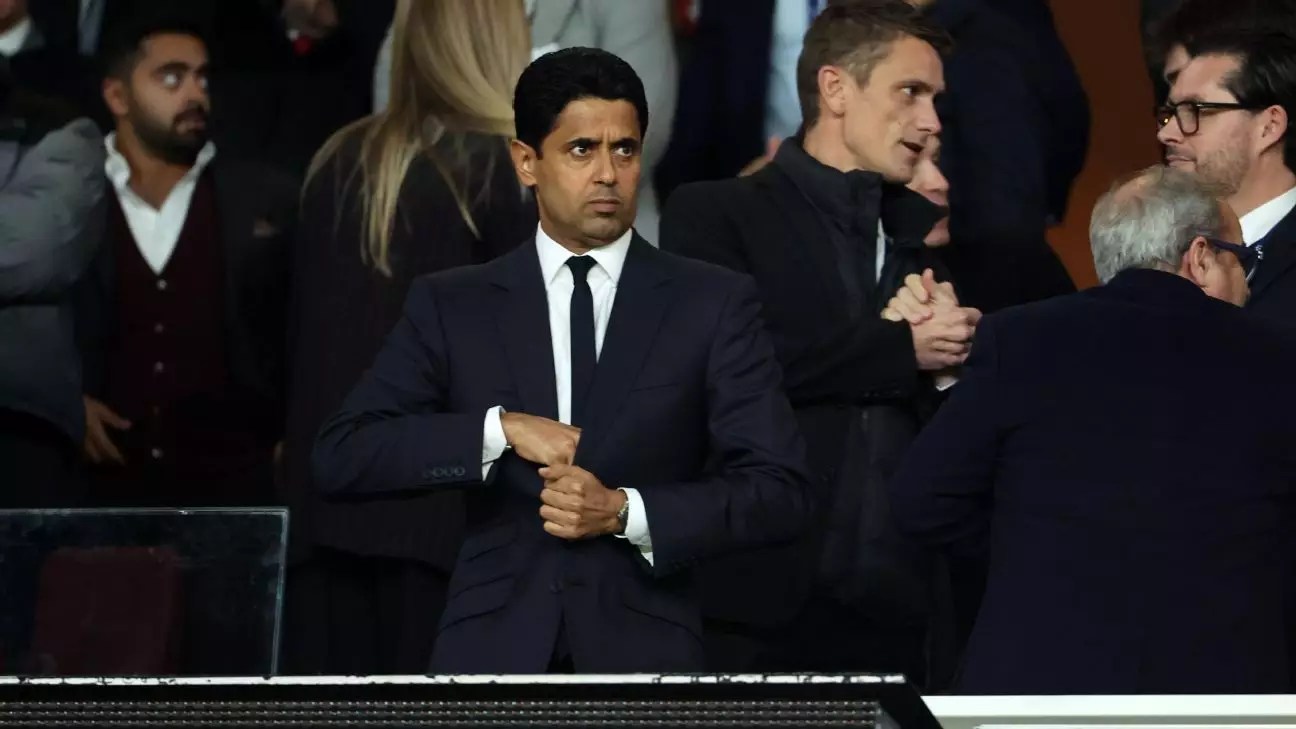The FIFA Club World Cup has long been a focal point for debates surrounding the global football calendar, but the proposed changes to its format have ignited a new wave of controversy. As Paris Saint-Germain (PSG) president Nasser Al-Khelaifi recently expressed, the forthcoming overhaul of the tournament, set to launch in the United States in June 2025, is met with both enthusiasm and skepticism. Al-Khelaifi’s defense of the new structure invites critical reflection on the motivations and ramifications of such changes, particularly regarding player welfare and competition dynamics.
A New Era for Club Competition
The upcoming Club World Cup proposes to expand its participant list from the traditional seven to a robust 32 teams, engaging in a tournament lasting four weeks across various American stadiums. The primary intention behind this expansion appears to focus on inclusivity, elevating the stage for clubs from confederations around the globe, which historically had limited chances to showcase their prowess. However, this shift necessitates understanding whether it genuinely enhances the game’s appeal or merely complicates an already congested calendar.
Al-Khelaifi’s assertion that any club unable to accommodate this change should forgo participation raises pertinent questions about the balance between competitive integrity and financial viability. His call for clubs to abstain if they are dissatisfied reflects a rather stark view: adapt or exit the arena. This stance may alienate smaller clubs that lack the resources to handle the demands posed by an extended competition, highlighting a potential divide between wealthier organizations and their less affluent counterparts.
One of the most troubling aspects of this expansion is the overwhelming pressure it places on players and their respective teams. Prominent clubs such as Manchester City and Real Madrid could face grueling 11-month seasons if they progress through multiple competitions simultaneously. The physical strain on athletes in an already relentless football calendar, compounded by the demands of international fixtures, sparks serious implications for player health and longevity. Critically, we must ask: Is the thrill of a more extensive tournament worth the potential burnout of professional players?
Al-Khelaifi acknowledges the reality of the congested calendar but suggests that it is a topic ripe for constructive dialogue among stakeholders. Such a collaborative approach is undoubtedly necessary, yet the mere acknowledgment of the issue does not address the urgent need for systemic reform within the footballing structure. Without substantive changes to the overall calendar, introducing new competitions may seem more like a band-aid than a sustainable solution.
Financial motivations play a prominent role in the defense of the restructured tournament. Al-Khelaifi pointed to the need for clubs to recoup losses from escalating player salaries, indicating that clubs are not purely profit-driven entities. While it’s true that clubs must manage their budgets astutely, the emphasis on financial recovery underscores a broader systemic issue within the sport: the escalating cost of talent and the revenue pressures that accompany it.
More than financial gain, the Club World Cup presents an opportunity for clubs to galvanize fan enthusiasm and engagement on a global scale. However, if the primary focus remains on generating revenue, it risks undermining the fundamental spirit of competition in football. Can we truly celebrate a tournament that places financial necessities above the welfare of its athletes?
A Path Forward
In light of these challenges, the future of the FIFA Club World Cup lies in a balanced approach that prioritizes both innovation and athlete well-being. Stakeholders must aim for a model that not only excites fans but also respects the endurance of players who are the lifeblood of the sport. The potential of the new format teeters on the brink of success or failure, dictated largely by how clubs, leagues, and FIFA engage in an ongoing dialogue to optimize the competitive landscape.
As the countdown to June 2025 begins, the football community must remain vigilant. The beauty of the game, magnified through events like the Club World Cup, can only thrive if the structures supporting them are sustainable and considerate of all their participants. As we proceed toward this new chapter in club football, it is essential to remember that the most valuable asset in this equation is not the financial gain at stake, but rather the players who embody the sport’s passion and excitement.


Leave a Reply